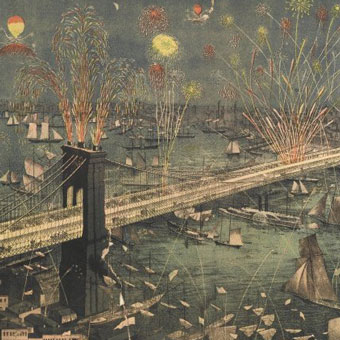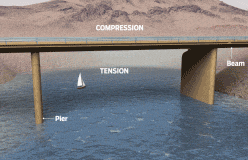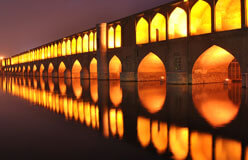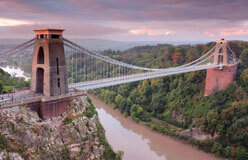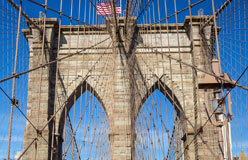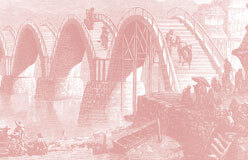Between 1810 and 1850, the population of Brooklyn, New York, increased from about 3,000 to over 100,000.
Brooklyn residents who traveled to the island of Manhattan had to take a ferry across the East River. However, the river tended to freeze during the winter, and ferries were overcrowded during rush hour. Clearly, a new means of crossing was needed. In 1867, Henry Cruse Murphy, a former mayor of Brooklyn, proposed building a bridge. Two years later, construction began on what was to become one of the most extraordinary engineering feats in history.
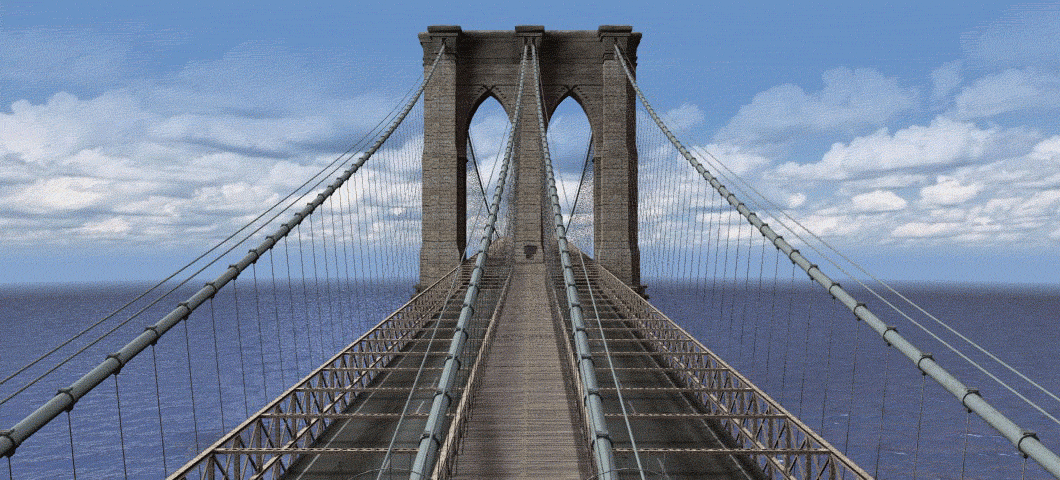
Explore the Brooklyn Bridge
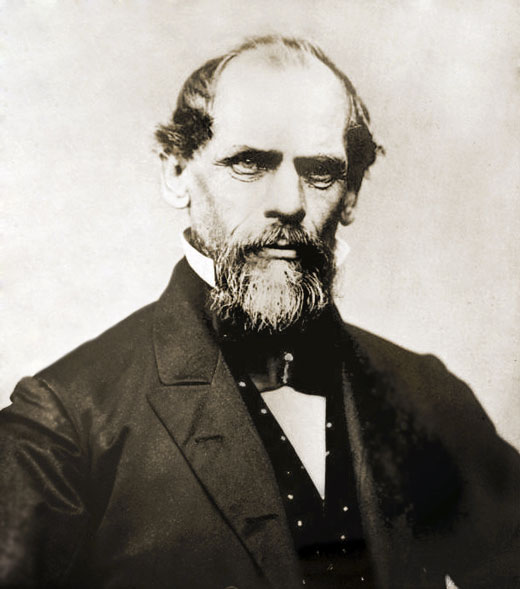
◀ John Augustus Roebling was the main engineer and designer of the Brooklyn Bridge. Before construction even began, he died from tetanus after a freak ferry accident in 1869.
John Roebling’s son, Washington, took over the job. He worked for three years before developing caisson disease (the bends), which confined him to bed for the rest of his life. Unwilling to give up the job, Washington viewed the bridge’s progress through binoculars from his Brooklyn house. His wife carried his instructions to the workers. ▶
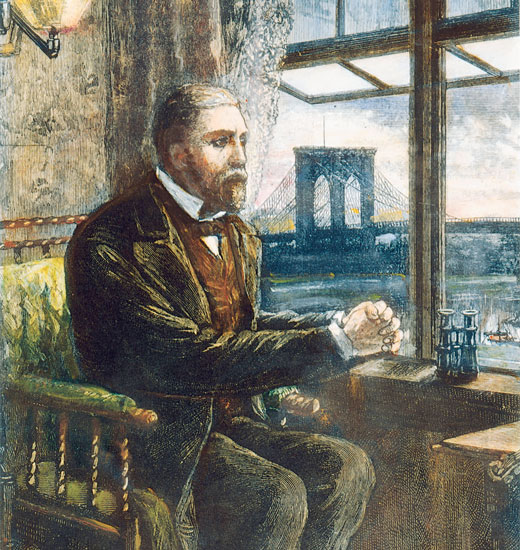
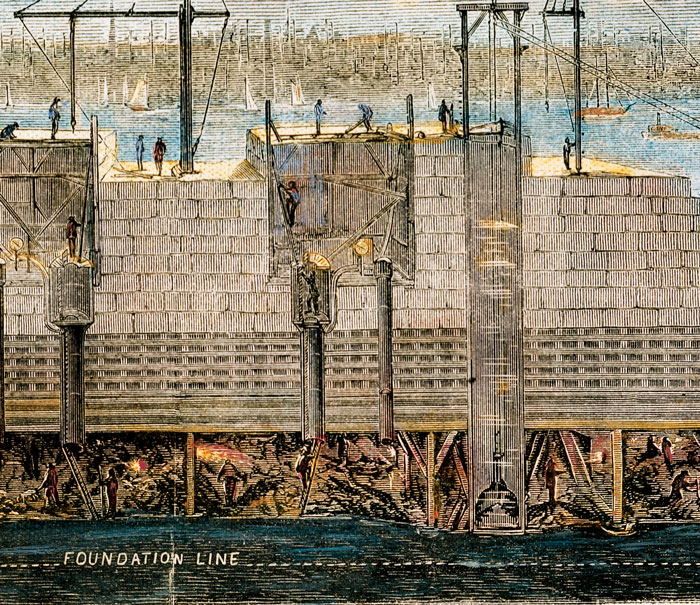
▲ Building the bridge was dangerous. Inside the wood-and-iron caissons (large, watertight chambers lowered to the riverbed in order to dig foundations), temperatures could be over 80°F. The deeper the workers went, the greater the air pressure, which made it difficult to breathe.
Check It Out!
Some caisson workers developed the bends. What are the bends?
The bends—a condition caused by a quick change in air pressure, usually from returning to the surface too rapidly—got its name because some people who suffered from them were in such pain that they could hardly stand up straight.
12 Steps to Building the Brooklyn Bridge
▲ 1870: The site for the tower on the Brooklyn side is cleared, and construction begins.
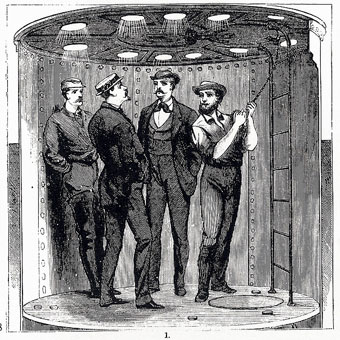
▲ A caisson is lowered to the riverbed on each side. Steam engines pump air into the chambers, forcing out the water. Workers enter through an air lock so the air pressure is maintained. They clear away earth and silt from the bottom of the river to reach the bedrock that would become the foundation for the two piers. Both caissons are filled with concrete to become part of the permanent foundation.
▲ 1876: Construction of the bridge’s towers, which were built up from the caissons, is now complete.
▲ Construction of the two anchorages—which are located on land and hold the cables in place—begins.
▲ A “traveler rope” is stretched between the bridge’s two towers. A person can cross the East River on it, but the trip still takes about 20 minutes.

▲ A temporary footbridge of wood and rope is strung between the bridge’s two towers. This makes it possible for workers to go from one side of the river to the other.
▲ Many steel wires (thinner than a pencil) are stretched across the span. These are then twisted together to form two pairs of thicker, stronger cables.
▲ Two-inch-wide steel suspenders are hung from the cables to hold the steel deck.
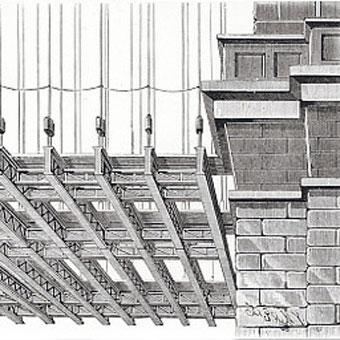
▲ Large steel beams are positioned on what will become the bridge’s deck.
▲ The temporary wood and rope footbridge is removed to leave a sturdy deck.
▲ Diagonal stay cables that stretch from the towers to the deck are added to the bridge. These cables make the bridge’s deck stronger and stiffer.
▲ May 24, 1883: The opening ceremonies for the Brooklyn Bridge take place.
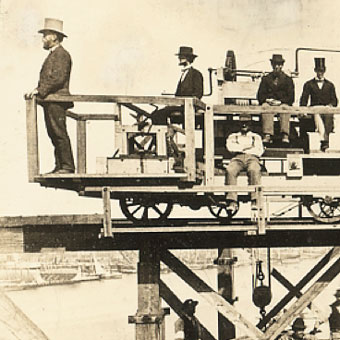

_340.jpg)
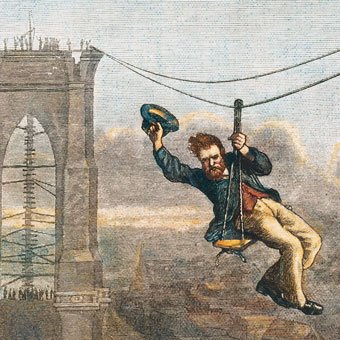
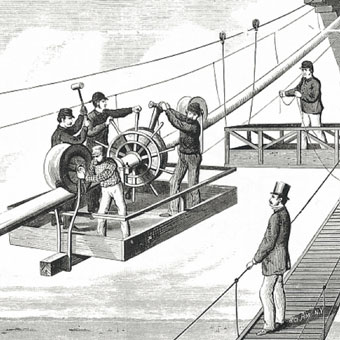
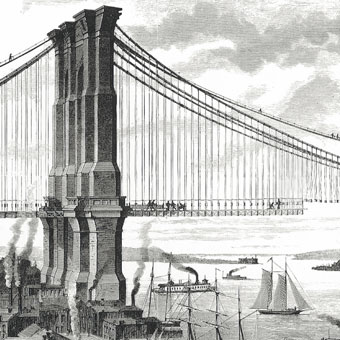
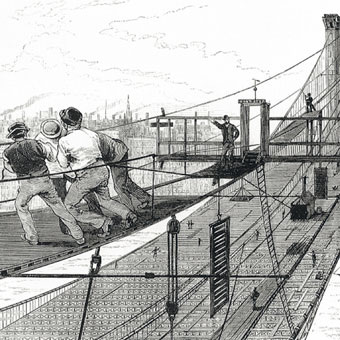
_340.jpg)
